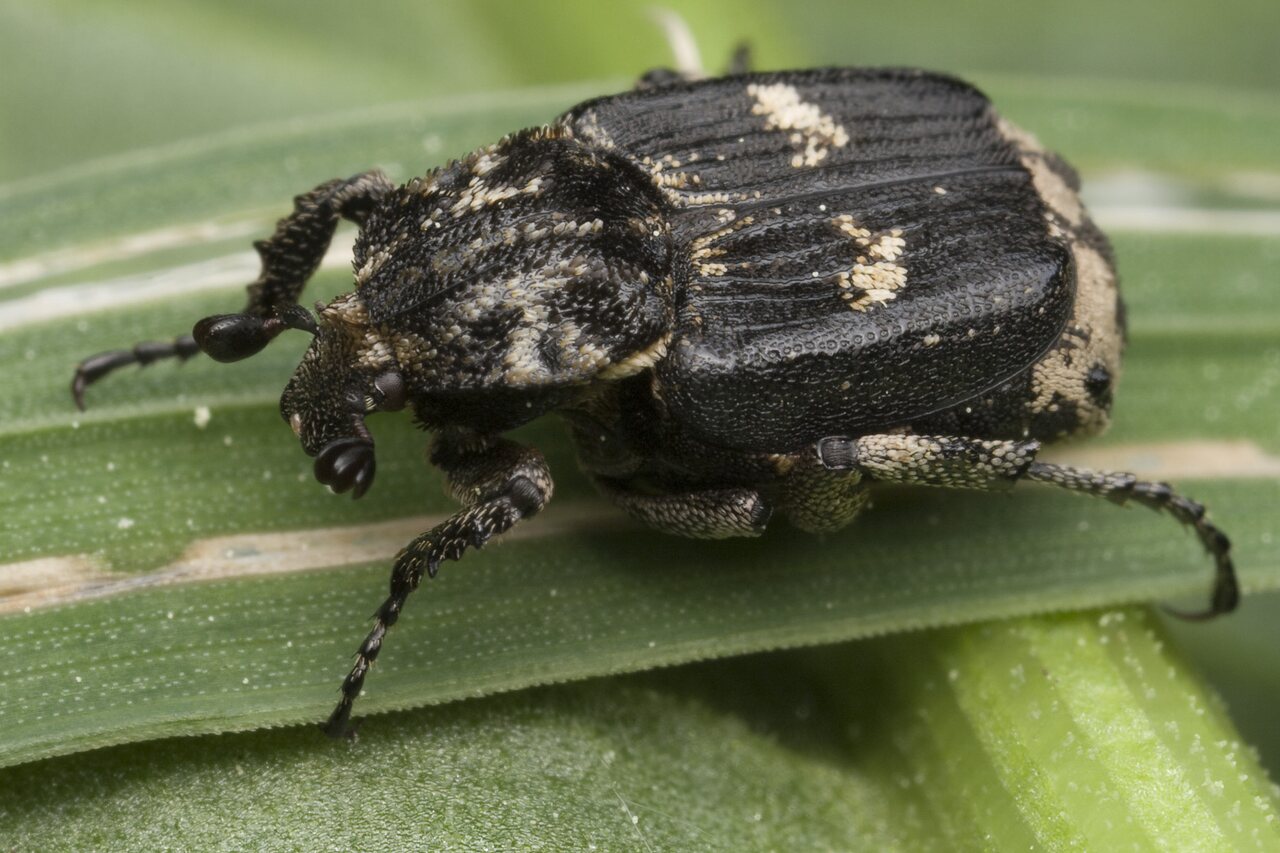
Valgus hemipterus male · smailapilvis grambuoliukas ♂
Vilnius, dešinys Neries krantas ties Griovių draustiniu.
- Bug flower chafer
- Stolperkäfer
- smailapilvis grambuoliukas
- krzywonóg półskrzydlak
- skäckig lövborre
This species reaches a body length of 6–10 mm. The basic color is black or dark brown. The scales on the body of the male are dark brown with a light pattern, while most scales in females are dark. Pronotum is rather serrate along lateral edges, a transverse medial ridges is not well developed and basal margin is quite rounded. The elytrae are shortened and do not cover the entire body. Pronotum and elytra show patches of light-colored setae.
Females bear a striking long acuminate telson - unusual fact in Coleoptera - with a central groove near apex and irregular lateral serrations, which makes them easily distinguishable from the males. In addition, The males have a different drawing than the females. Adult females usually oviposit to moist, rotting wood and use their acuminate telson to create the site of oviposition. The larvae live in the soil and feed on dead wood of birch and other trees.
This species occurs from southern and central Europe to the Caucasus and Turkey to North Africa. The species has been introduced to the Nearctic realm, in parts of North America. These beetles, which can be found from May to June on flowers or wood, are relatively common. The species has one generation (univoltine) and hibernates as a pupa.
Kūnas 6 - 10 mm. Paplokščias, apaugęs balsvais ir juodais žvyneliais. Priešnugarėlėje yra dvi pailgos briaunelės, viduryje ir šonuose didoki, gana gilūs įdubimai. Antsparniai ovalūs, trumpi ir plokšti, su pastebimomis vagutėmis. Aptinkama ant įvairių augalų žiedų. Lervos vystosi senų trūnijančių lapuočių medžių medienoje. Patelės pilvelio gale ilga, dantyta kiaušdėtė. Lervos vystosi senų trūnijančių lapuočių medžių medienoje. Lietuvoje retas.
‥
0 comments
Add a comment
Comments